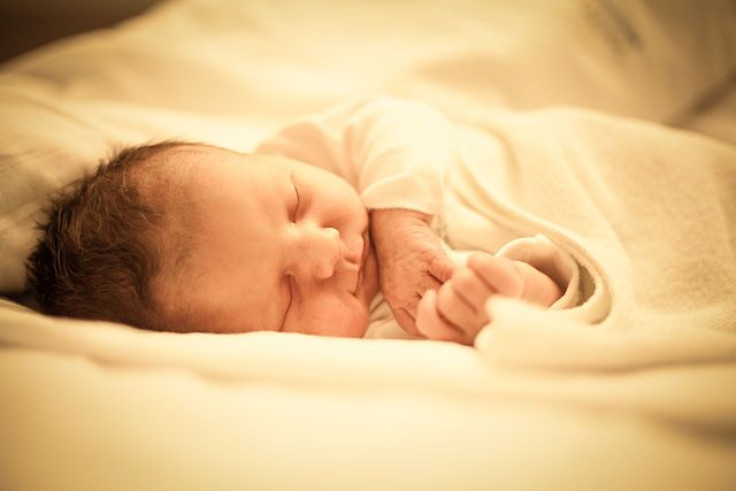Infant Bonding And Attachment: Frequent Overnights With Non-Resident Parent Leads To Insecurity

Today it is frequently the case that infants and toddlers have parents who live apart due to separation, divorce, or simply some arrangement of non-cohabitation. Yet how these living arrangements may affect an infant's attachment ability has been an understudied mystery. Do frequent overnight stays with the non-residential parent have any effect on the infant's potential to form attachments?
A national study conducted by University of Virginia researchers recently explored this very question. The researchers found that infants who spend at least one night per week away from their mothers have less secure attachments to their mothers compared to babies who had fewer overnights or saw their fathers only during the day.
Overnight Stays: How Common Are they?
Commonly accepted attachment theory suggests that babies have an innate biological need to be bonded to caregivers, generally their parents. Increasingly, though, it is the case that parents share custody without living together.
To derive an understanding of infant attachment under these circumstances, the researchers analyzed data from the Fragile Families and Child Wellbeing Study. This longitudinal study follows about 5,000 children born to primarily low-income, racial/ethnic minority parents in 20 U.S. cities with populations over 200,000. Researchers from Princeton University and Columbia University collected data from 1998 to 2000 in the form of interviews with both parents at the time of the child's birth, and then again at ages one and three. Additional in-home assessments of the children were conducted when the children reached the ages 1 and 3.
Now, researchers from the University of Virginia examined the early data from Fragile Families and Child Wellbeing Study to understand the experience of children with parents who live separately. They found that, for those parents who did not share a home, 6.9 percent of babies under age 1 who lived primarily with their mother spent at least one overnight a week away with their father. Among toddlers ages 1-3, 5.3 percent spent between one percent and 35 percent of overnights away with their fathers. Another 6.8 percent spent 35 percent to 70 percent of overnights with their fathers.
The University of Virginia researchers determined that frequent overnights were significantly associated with attachment insecurity among infants. This relationship, though, was less clear among toddlers. Further, the researchers found that attachment insecurity predicted adjustment problems at ages 3 and 5, but frequent overnights were not directly linked with adjustment problems at older ages. Fascinating though these findings may be, is it so very important how babies learn to "attach" when children are dynamic and changing all the time?
Well, yes.
Attachment Theory: A Primer
Attachment theory was originally developed by John Bowlby with his colleague Mary Ainsworth during the 1950s. Expressed in the most rudimentary way, the theory states that attachments formed during a child's critical first year of life serve as the paradigm for forming relationships throughout life.
The assumption underlying the theory is that every human being is born with an innate attachment system with a clear biological function to obtain and maintain proximity to significant others in times of need or the presence of threats. This support-seeking behavior is crucial for survival in early life, as a child cannot live without the care of a primary caregiver, usually the mother. With mammals, the mother is the main source for food, so attachment is particularly vital; the period of time during which a child is dependent is relatively long for humans, so bonding serves an even greater purpose for preserving the species.
What makes attachment theory significant beyond childhood is that the parent's response to the child's attempts to bond and other interactions provide the foundation for how we present ourselves and our behavior in interpersonal relationships later on in life. The parent-child relationships sets what is called our "internal working models of attachment" (IWMs). These original, infant experiences provide the template for how we perceive ourselves throughout our lives and also how we respond to others in both intimate and casual relationships.
The exploration of University of Virginia researchers into the effects of infant attachment, then, has far-reaching ramifications.
Application: Revisiting Shared And Joint Child Custody
"Judges often find themselves making decisions regarding custody without knowing what actually may be in the best interest of the child, based on psychology research," said Samantha Tornello, the study's lead author, to UVA Daily Report. "Our study raises the question, 'Would babies be better off spending their overnights with a single caregiver, or at least less frequently in another home?'"
Tornello suggested that either the mother or father be the primary caregiver, as consistency is the important matter; ideally, a child should be in the care each night of the same caregiver since infants seem to be disrupted when spending nights in different homes.
To reiterate, those Infants who spent at least one overnight a week away from their mothers were discovered to have more insecure attachments compared to babies who had fewer overnights or stayed with their father only during the day. Forty-three percent of babies with weekly overnights were insecurely attached to their mothers, compared to 16 percent with less frequent overnights. In the case of toddlers, though, the findings were less dramatic; greater attachment insecurity was linked to more frequent overnights, but the findings there were not statistically reliable, Tornello noted.
"We would want a child to be attached to both parents, but in the case of separation a child should have at least one good secure attachment," she said. "It's about having constant caregivers that's important."
Source: Tornello SA, Emery R, Rowen J, Potter D, Ocker B, Xu Y. Overnight Custody Arrangements, Attachment, and Adjustment Among Very Young Children. Journal of Marriage and Family. 2013.
Vrtička P, Vuilleumier P. Neuroscience of human social interactions and adult attachment style. Frontiers in Human Neuroscience. 2012.



























